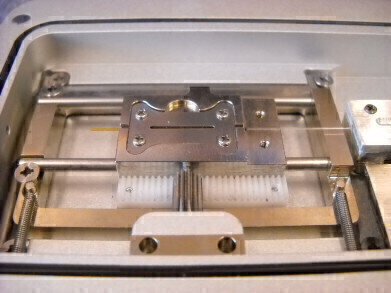Microscopy & Microtechniques
Innovative Heating Stage used for extreme Deep Sea Research
Nov 06 2013
A new modern hydrothermal laboratory is being built as part of the new Sanya Institute of Deep-sea Science and Engineering (SIDSSE), a division of the Chinese Academy of Geological Sciences.
Dr I-Ming Chou, a leading scientist behind the creation of the SIDSSE laboratory, and his colleagues are using the CAP500 stage to conduct experimental studies of extreme deep-sea conditions. He said: "The recent successful dive of manned submersible Jiaolong at the depth of 7062m was one of the major scientific achievements of China. This accomplishment provided us with great opportunities for exploring the sea floor, especially the hadal zones that have previously been inaccessible to us."
To further their geological research the scientists are using the prototype Linkam CAP500 stage. The CAP500 system can control up to 50mm of quartz capillary at high pressure (600bar) from -196°C to 500°C. In relation to the stage Dr Chou said: "We are beta testing this system with a number of different labs at the moment. Sample temperatures are controlled using a T95 controller with a T95 LinkPad and LNP95 cooling system through Linksys32 temperature control and video capture software. A capillary tube of HPOC can be inserted into a channel of a silver block. Optical cells have fused silica windows for the study of geological fluids. A small aperture through the centre of the stage, allows samples to be viewed with transmitted light while its design minimises the temperature gradient along its length."
Dr Chou noted: "The simulated pressure-temperature conditions we can create using the CAP500 will cover hydrothermal vents, hadal zones, and trenches. A major advantage of the high-pressure optical cells is the transparency of its windows. Using optical cells allows us to not only observe many geological processes at higher P-T conditions, but also characterise geological samples in the cells by using advanced spectroscopic tools, including Raman spectroscopy and synchrotron X-ray spectroscopy."
When asked about the stage, Dr Chou said: "The stage has the following advantages for the study of geological fluids at P-T conditions up to 500°C and 600bar: it has (1) fluid samples which are easy to load; (2) greater Raman signal intensity; (3) sample pressures which can be measured directly when the HPOC is used; and is (4) easy to operate; and (5) less expensive than other systems on the market."
Digital Edition
International Labmate 49.6 - Sept 2024
September 2024
Chromatography Articles - HPLC gradient validation using non-invasive flowmeters Mass Spectrometry & Spectroscopy Articles - From R&D to QC, making NMR accessible for everyone: Putting NMR...
View all digital editions
Events
Sep 22 2024 Messina, Italy
19th Confocal Raman Imaging Symposium
Sep 23 2024 Ulm, Germany
Sep 24 2024 Kielce, Poland
WoTS - World of Technology and Science
Sep 24 2024 Utrecht, Holland
Sep 25 2024 Frankfurt am Main, Germany



















